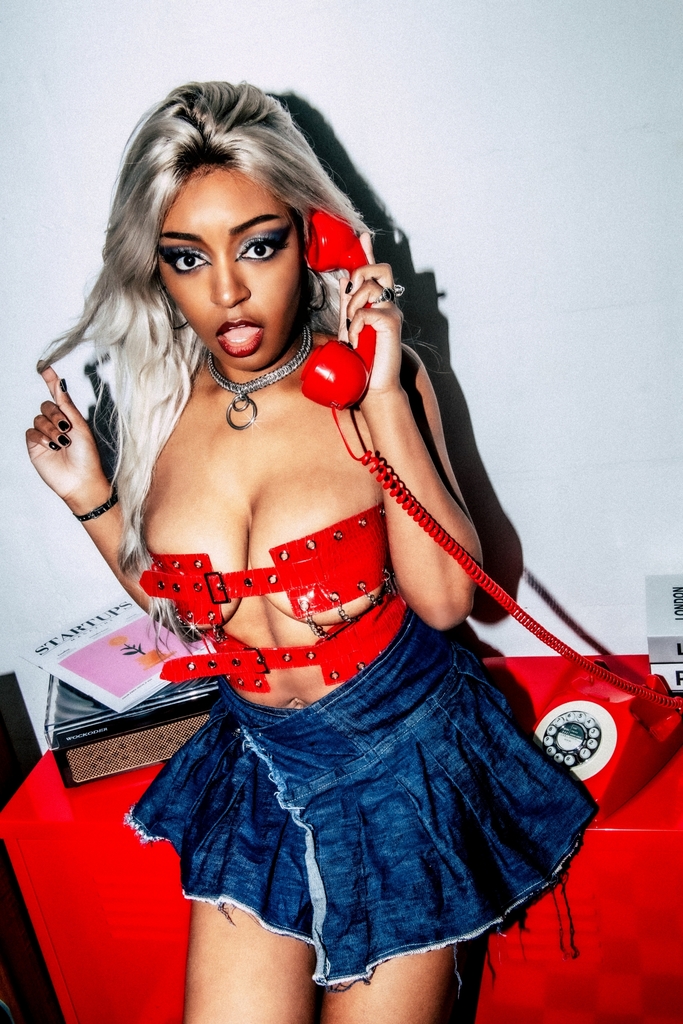Editor’s Note: Yasmin Benoit is an award-winning asexual activist and founder of the UK’s first asexual rights initiative. In this guest editorial for Playboy, she explains why being asexual has meant so much to her and why it may not look the way you might think. Please note that the UK spellings of words have been retained in this feature.
This is what asexual looks like. It looks like me. It also looks like a 60-year-old married man with three kids. It looks your cool ‘single’ aunt. It looks like your best guy friend who has never tried to hit on you. It looks like a Hijabi university student. It looks like a blue-haired non-binary teen. It looks like the BDSM babe at the fetish club. It looks like a wheelchair basketball bro. But that isn’t the image people have in their heads.


Being asexual means experiencing little to no sexual attraction towards anyone, regardless of their gender. It’s a type of sexual orientation, one that falls under the A in LGBTQIA+ – albeit, so far down the acronym that many don’t notice it’s there. We’re one of the least likely to be out of the closet. Our media representation is both sparse, awkwardly specific and often cliché. Asexuality isn’t included in sex education. Most countries don’t recognise it in their legislation. We’re still pathologized. Even dictionaries get the definition of asexuality wrong, so I don’t blame people for falling for stereotypes.
Read More: Viola Odette Harlow Has So Much More to Say
As a young teenager in the 2010s, I was able to discover asexuality when I was around 15, but no one believed me when I tried to come out because I didn’t have the right ‘look.’ People pictured either Sheldon Cooper or a quirky teenage white girl, not someone from one of the most hypersexualised demographics in the world. Apparently, asexuality wasn’t for people who looked like me. But being told that something wasn’t meant for me always made me want to explore it more.
It’s evident in my love of heavy metal, my affinity for alternative fashion, and my refusal to reject my asexuality to appease other people.

Fashion has always been an important part of my self-expression – one that lead me down the path I’m on now. Growing up, I didn’t see myself represented at all. The beauty standard marketed to me were tall, skinny white women. All the girls’ magazines told me to lose weight, get a boyfriend and wear the latest trends. It was why I sought refuge in media aimed at boys. Video games, professional wrestling, superhero cartoons, action films. There I was seeing women with body types more like my own, swinging punches, solving crimes, riding motorcycles, in much more interesting outfits than what I was used to seeing.
Read More: Joel Kim Booster on Sex Education
Were those depictions meant to serve the male gaze? Probably, but as an asexual girl, I couldn’t care less about the male gaze. I just wanted to see badass girls and harness their confidence myself. At the time, that perspective was treated as weird. Girls were meant to aspire to be Bella Swan in Twilight, not Mikaela Banes in Transformers. Kristen Stewart was cool because guys liked her when she just wore a hoodie and jeans. Megan Fox must be a bitch because guys only liked her when she wore a mini skirt and a crop top.
It had never made sense to me why a women’s value was based on how she existed during the times men found her attractive. It wasn’t just a case of the male gaze being treated as bad, but also the women who fell under it or flourished within it. I assumed we had moved away from that perspective until I publicly came out as asexual. Unwittingly, I’ve become one of the most controversial asexual people on the internet, purely because of my appearance. Thousands of hate comments poured in on a regular basis, along with articles mocking me, my images going viral, and my appearance picked apart.
I say ‘appearance’ instead of outfits, because it goes deeper than the fabric. While my work as a lingerie model has come back to bite me many times, I get the same criticism in jeans and a t-shirt. It was only this summer when a TV presenter on a British news channel said that even my lips were too sexual.
“Why doesn’t she just wear a potato sack?”
“Why wear make-up?”
“Shouldn’t she be free from the shackles of dressing up if she doesn’t want sex?”
To me, what I do to my body isn’t for anyone else. It isn’t a shackle, it’s part of my freedom. No one should feel like they have to present themselves in certain way because of their sexual orientation, or like they need to change themselves to fit into someone else’s rigid expectation of how they should represent themselves. And women in particular shouldn’t have to spend their lives trying to dim their light to avoid sexualisation – it’s impossible. I’m not afraid to be sexy while asexual. I’m not afraid to be the asexual representation people don’t expect – in places people least expect to see it. To me, it’s empowering.
Photographer – Danny Woodstock
Stylist – Jubbi S.
MUA – Ayami Okano
